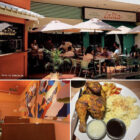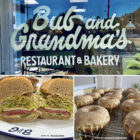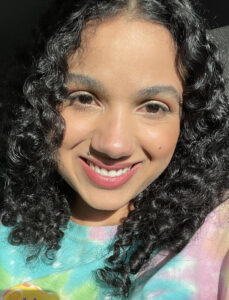
Welcome to LA Stories, a section where I interview people from all walks of life that have made LA their home.
Update (2024): Second Home Hollywood is now called The Preserve LA.
In 2021, when I visited Second Home for the first time I was completely mesmerized by the space: meandering paths among luscious green spaces, bungalow style offices with dreamy garden views and a terrace overlooking the lily pad-like roof pods. Second Home is an urban jungle in the middle of LA. It’s a tranquil oasis where people and nature merge, a place where creativity blooms. The space also includes a bookshop, an auditorium for events, a podcast recording studio and a cafe. I’ve seen many shared coworking spaces in LA, but none of them hold a candle to Second Home.
Second Home Hollywood officially opened its doors in November 2019. If you want to read the full post I wrote on Second Home, click here.
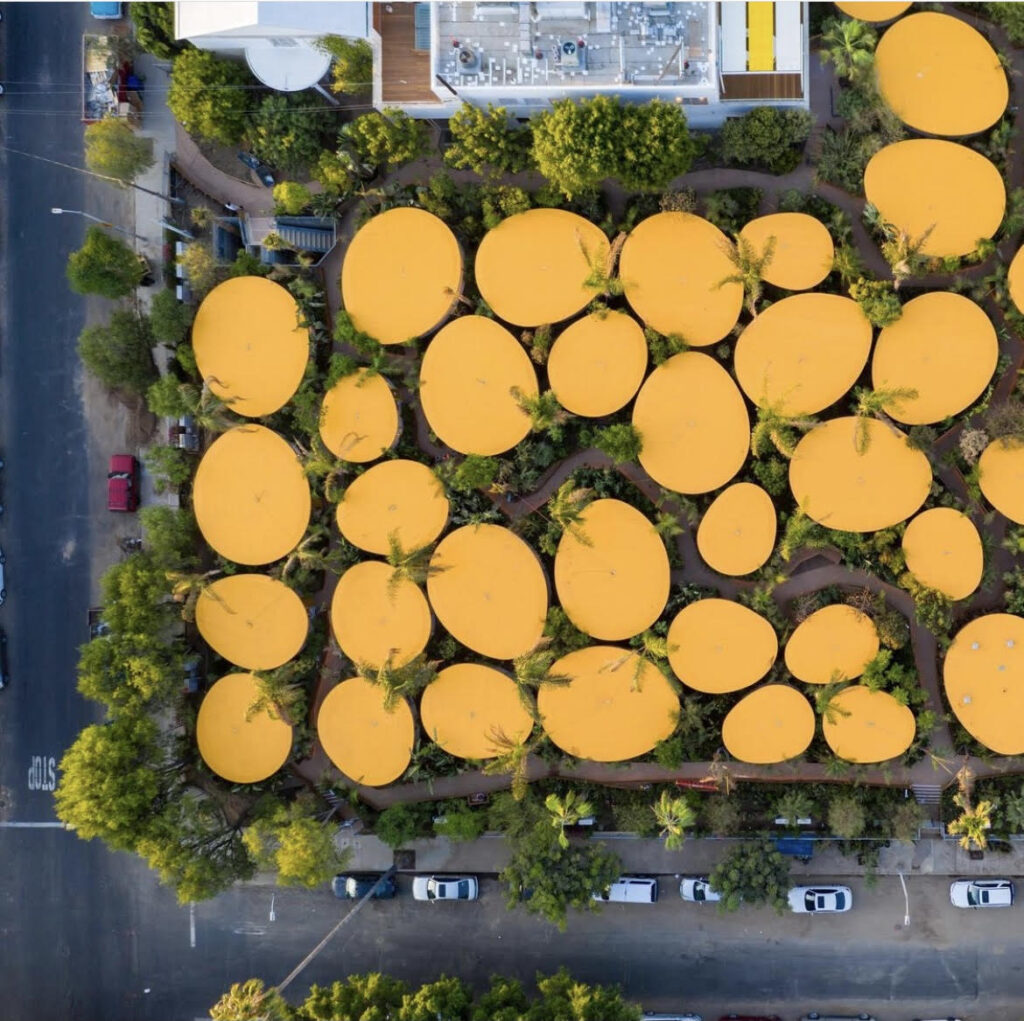
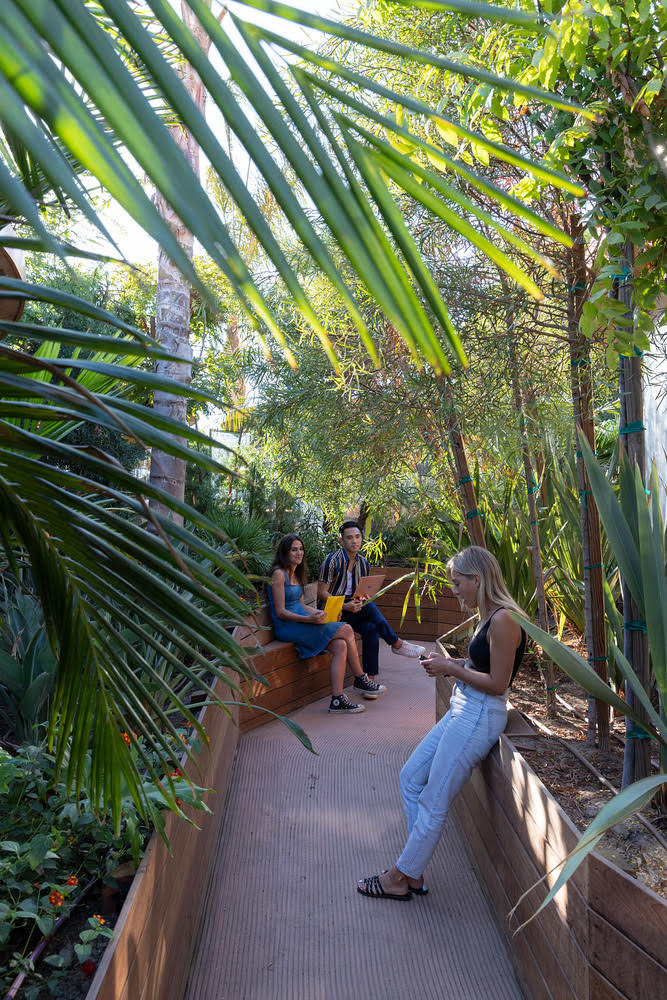
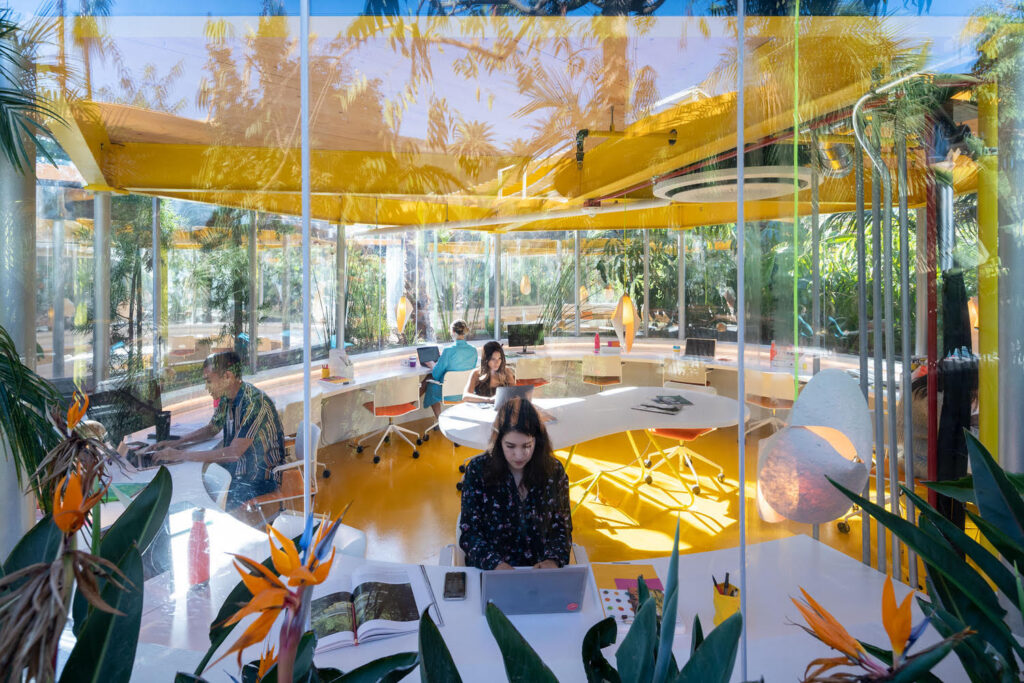

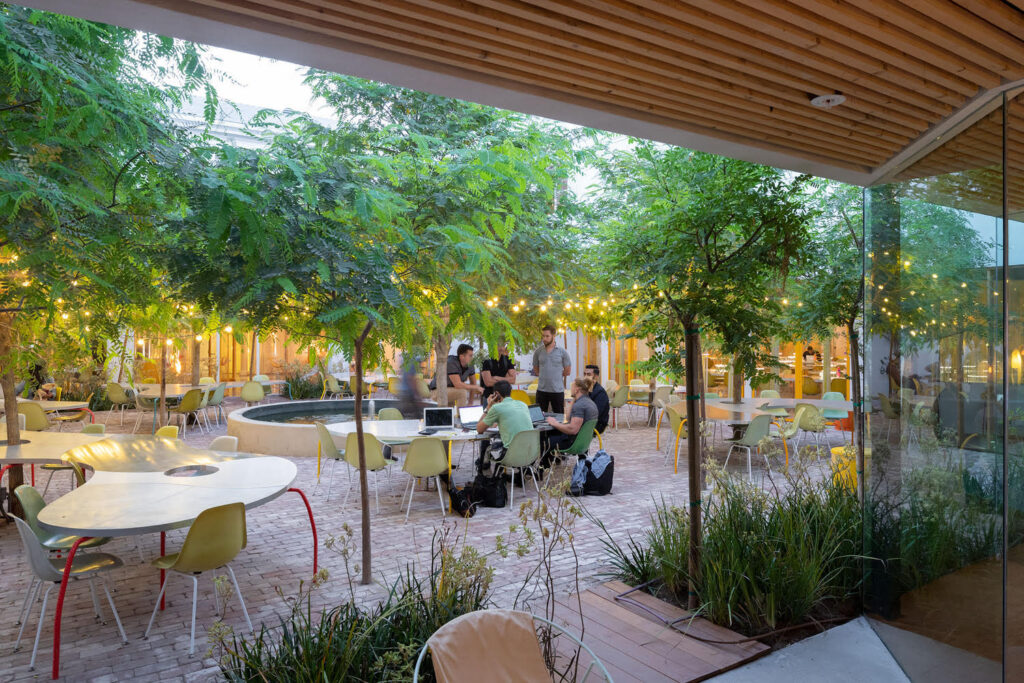
Second Home headquarters, which are in the UK, enlisted the help of Madrid-based architecture firm SelgasCano to build its first U.S. location in Hollywood.

In this interview, Diego Cano-Lasso, who, like me, hails from Madrid, shares what the creative process was like and the challenges that went into building the space. I first came across Diego on this video I saw on Second Home’s Instagram account. When asked what he liked about LA, he said “everything” and then proceeded to talk about the integral part the city of Los Angeles played in creating the space.
Diego has been living between Madrid and LA for 10 years. In this interview, we also talk about his favorite places in LA, architecture, Spain and his current projects.
I interviewed Diego via Facetime because he was in Madrid. I hope you enjoy it!
Can you tell us a little bit about yourself?
I’m Diego Cano and I’m an architect. I studied in Madrid, London and Los Angeles. I finished my college career in SCI-Arc, in Downtown LA. I’ve been working with SelgasCano, who are my uncles, since I was 14 years old. Their headquarters are in Madrid and they work all around Europe, Asia and the U.S. — but I only work with them on U.S. projects.
How did you get involved in Second Home?
The owner and founder of Second Home, Sam Aldenton, is married to my cousin. His business partner, Rohan Silva, acquired the company shortly after the Second Home Hollywood location opened. They were based out of the Second Home offices in London and they wanted to open the first U.S. Second Home location in San Francisco. At that point, I didn’t know either Sam nor Rohan. Selgas asked me to go to San Francisco to meet them. I went there, I met them, we looked at spaces and buildings but I told them the place to open Second Home in California was LA, not San Francisco. It was a lot easier because there was a lot more space in LA and we could develop the concept of Second Home in a much better way — which is basically to combine nature with working spaces. In about 2 or 3 weeks, Sam visited me from London and I drove him in my convertible around Venice, Malibu, the hills (laughs) and he fell in love. From there, we started looking at spaces in LA. This was 2015 to 2017. During that time, they visited LA a lot looking for business partners and locations.
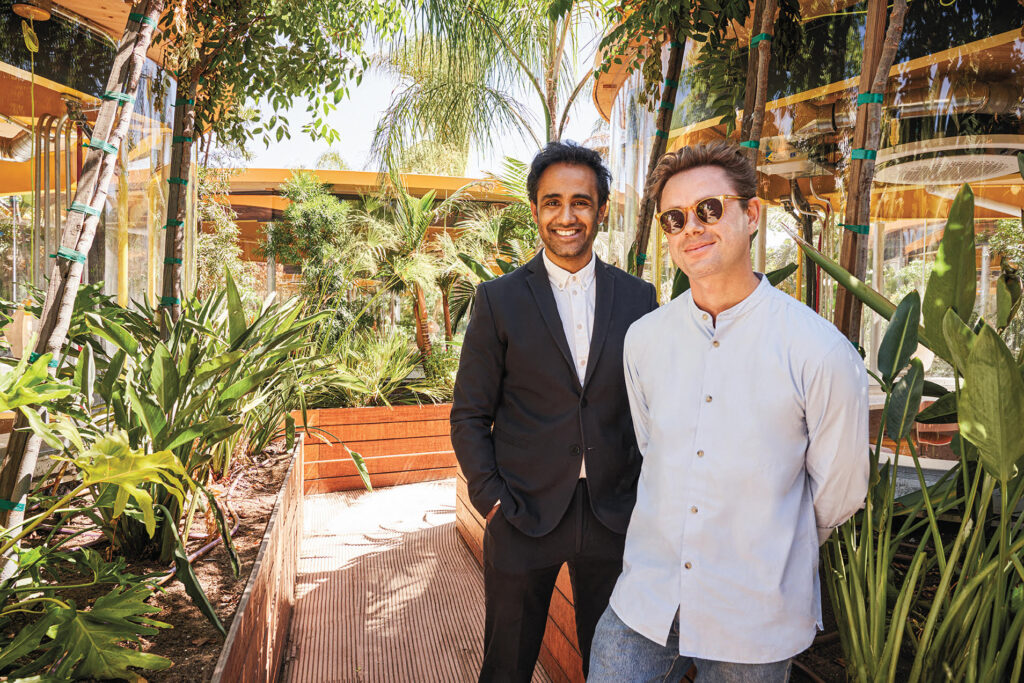
In London, they brought the plants inside the offices. In LA, what we did is bring the offices out to the garden because of the space and good weather. We found this space in East Hollywood with a building in a huge parking lot, and we said, “This is perfect.” We loved the idea and we started sketching on the airplane. Once we got to LA, we started selling the idea and people were loving it. We were like, “Let’s do this.”
What was the creative process, the vision and the inspiration behind the space?
I’ve lived in LA for 10 years. What I love the most is that when I’m at home, everything is very open. The doors and windows overlook a garden. So that was the idea, to have an office where you’re surrounded by a garden and you’re a part of it. Wherever you look, there’s a garden with natural light, hummingbirds and flowers.
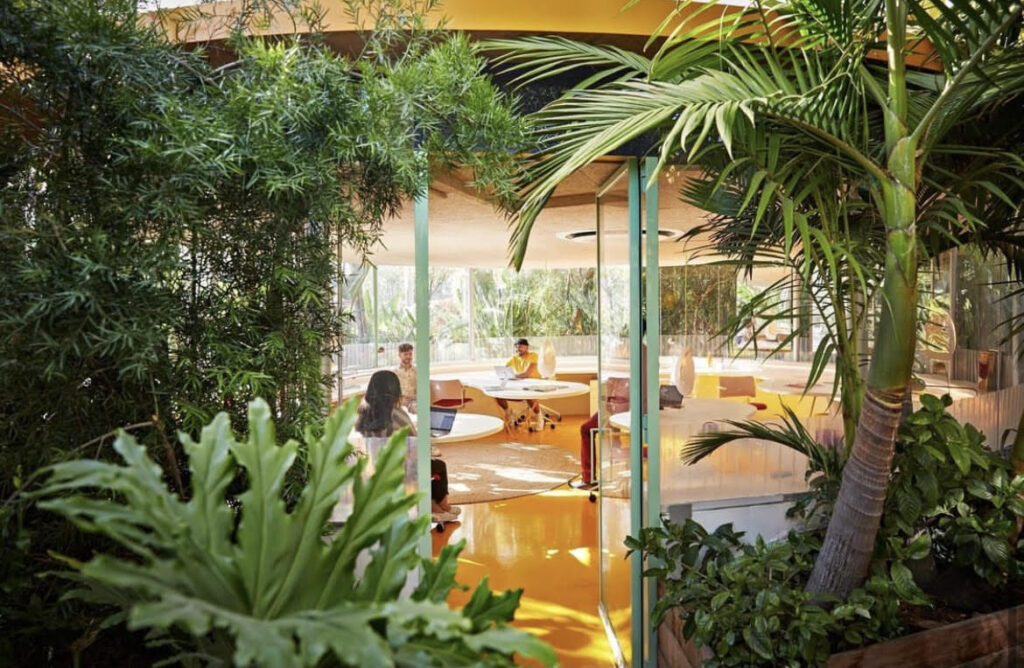
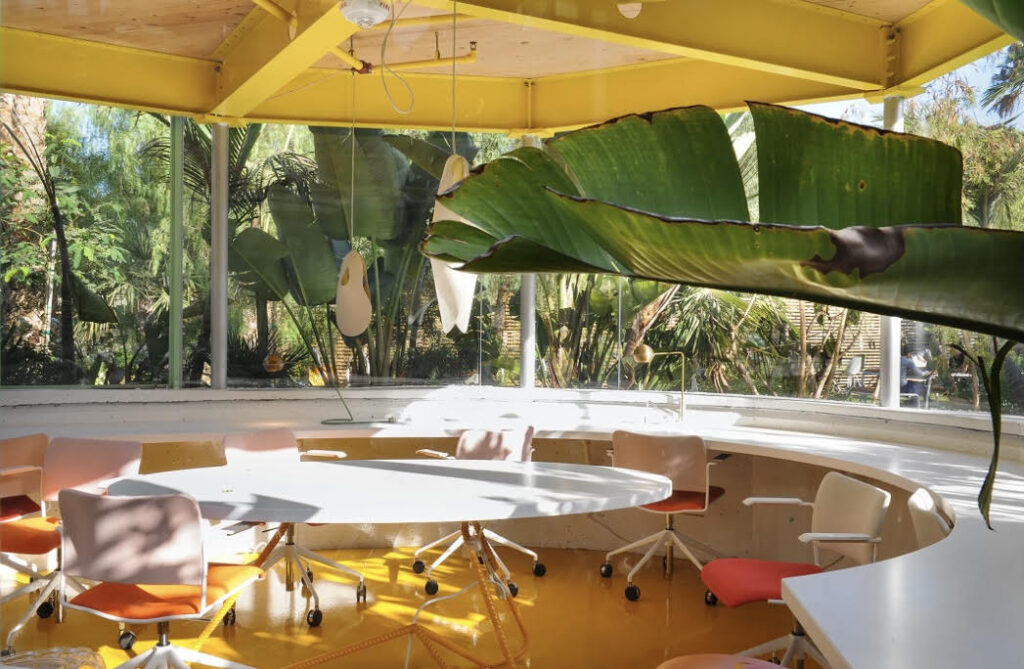
The first time I went to Second Home, I immediately fell in love with the space. I’ve never had an experience like that, especially in that part of LA that is so busy and congested. For someone who’s never been to Second Home before, what is the experience you want to convey?
We want them to get lost in the garden. To enter another dimension where nature is part of the city. We talk a lot about climate change and taking care of nature, but there’s not a lot of steps when it comes to embracing it. We have to embrace nature and get closer to it because we’ve been away from it for a long time.
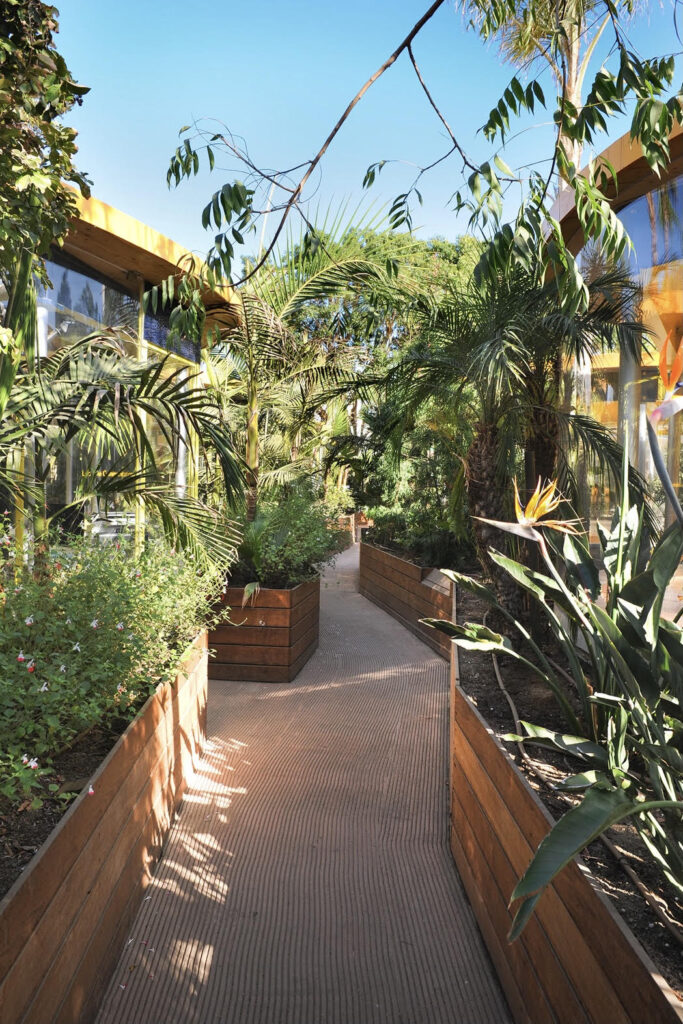
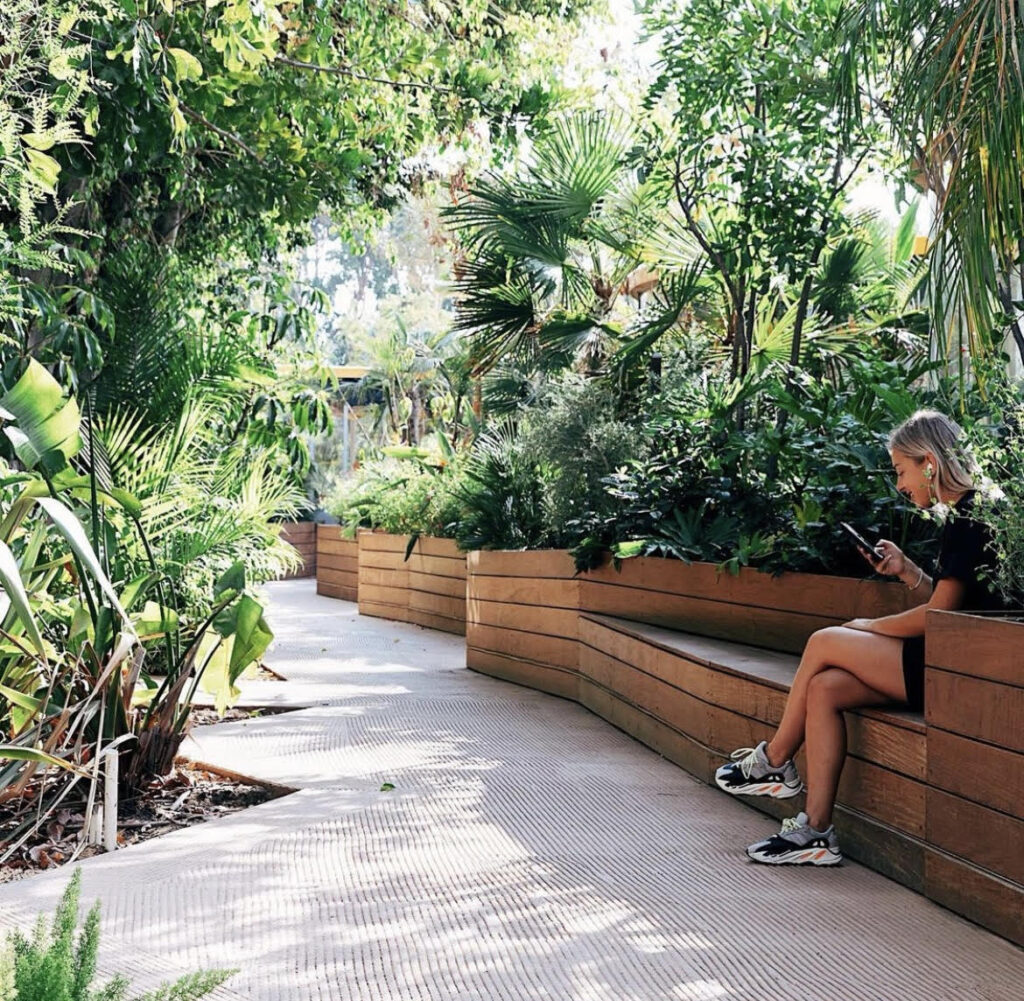
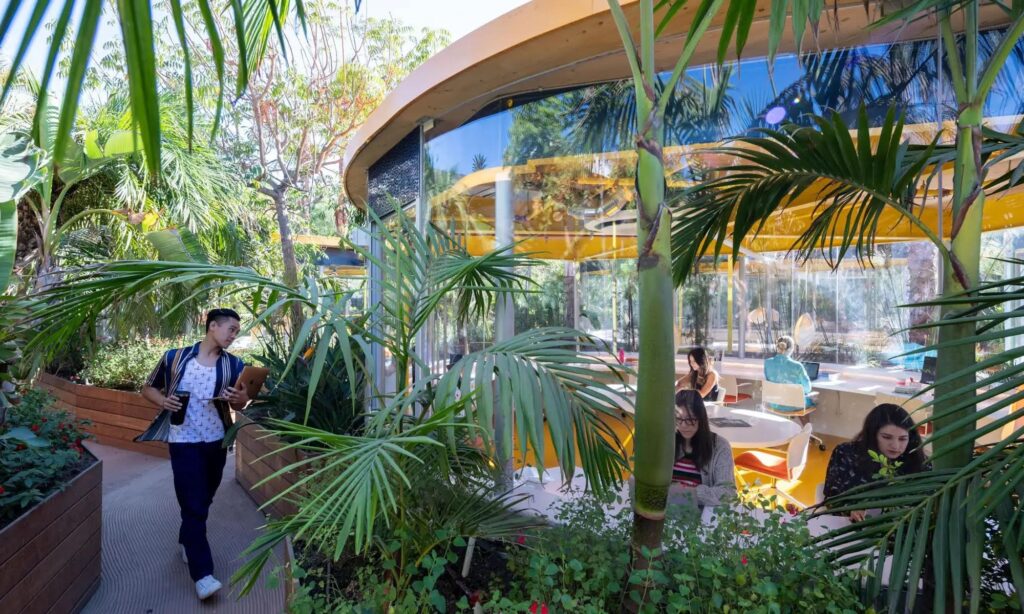
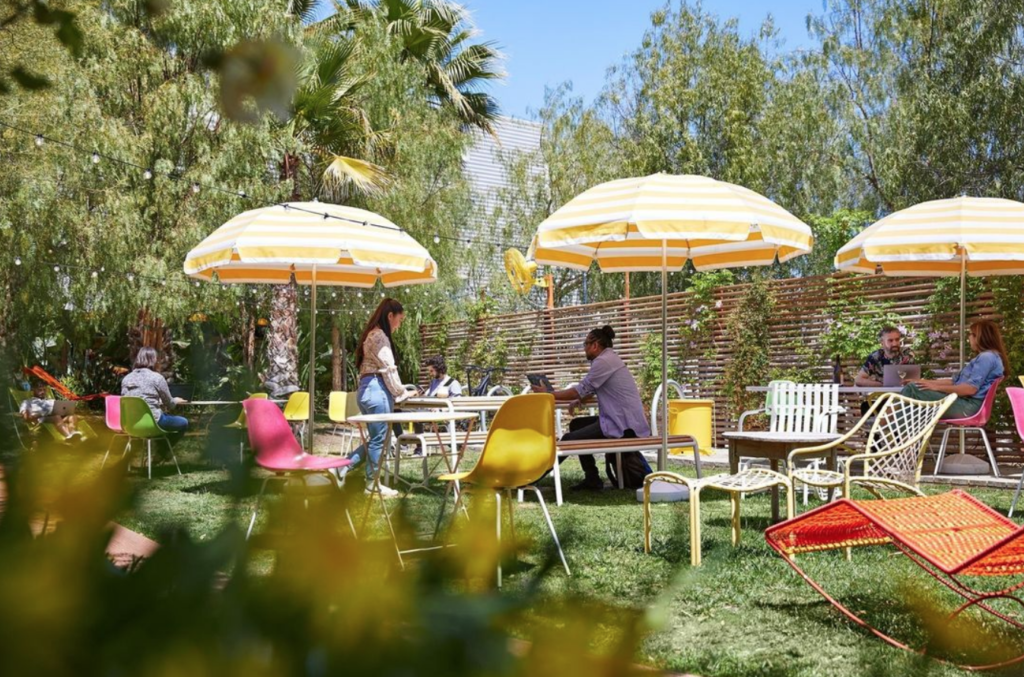
Yellow is the most abundant color in the space. Why yellow?
(Laughs). It’s a good question. Psychologically, yellow is a happy color. It’s not as aggressive as red, which is a very vivid color. Yellow is the perfect balance and pairs really well with green, plants are green with a lot of yellow in them. So, you could say yellow is a part of nature somehow.
When you look at Second Home from above, the yellow roof pods resemble lily pads. Last year I worked on the terrace overlooking the roofs. It was amazing! Can you tell me more?
That was actually unintentional. Originally, all the roofs were joined together. The idea has always been to have an organic design that resembled nature, like the green lakes that have flowers in them. The original design resembled lily pads, but all the roofs were together. When we looked at it, we realized that the roof structure looked very complicated, and that’s when we decided to separate it.
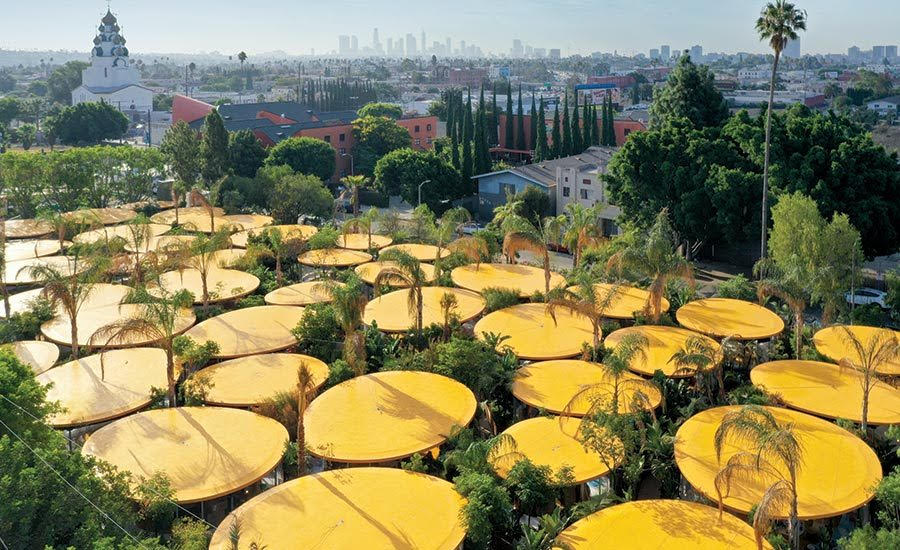
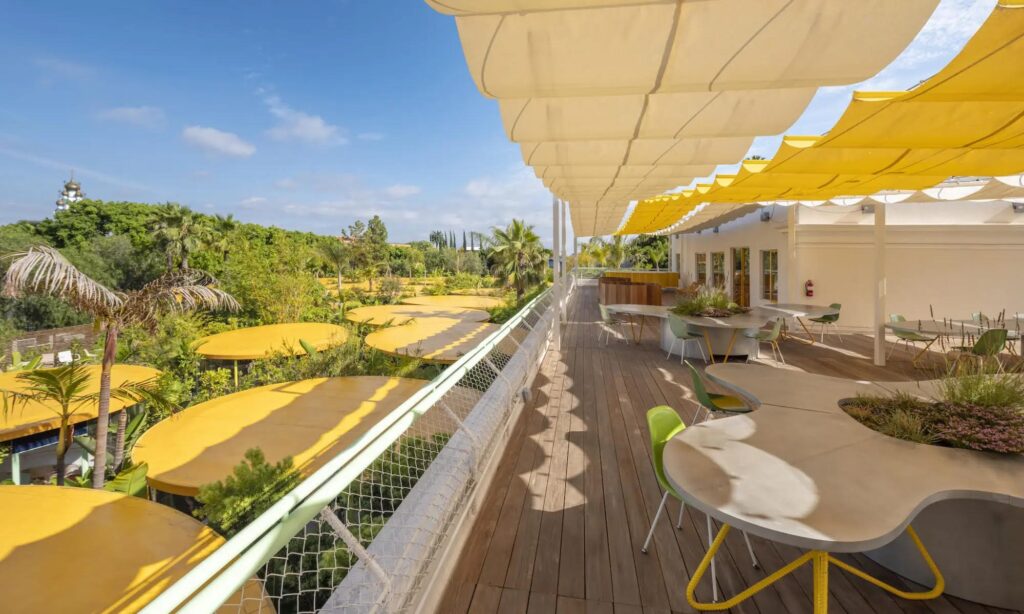
Mockup of the original design (Image courtesy Second Home)
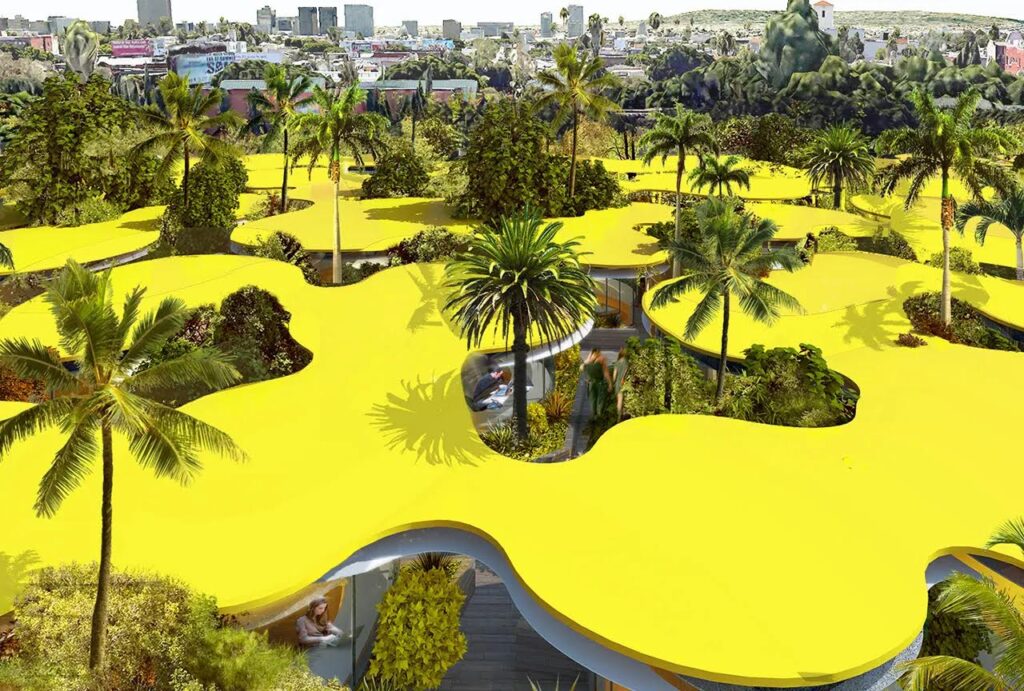
The offices in London and Lisbon were previous buildings, but for the LA office, you had to start from scratch. Were there any challenges?
There were a lot of challenges. All the garden is on top of the existing underground parking. That was a big structural challenge because we had to reinforce the parking structure. But, the most complicated and challenging part was getting the 8,000 plants. When the space was completely finished, we had 2 months to get 8,000 plants into the space. We went to nurseries all over California and got everything. At the end of July, we went for drinks to celebrate the birthday of a Second Home employee. Sam was very worried because the plants weren’t getting here on time, so I suggested driving all over LA the following day. We started on the 110 freeway and made our way towards the Port of Long Beach. There are a lot of nurseries there. We went to all of them and bought their entire inventory.
What happened was that once the plants arrived, we had no space to put them in. So we had to put them all on the street, in addition to the piles of soil that we had — and we had to carry everything inside with a wheelbarrow. Another challenge was to find a team who could do this labor. We tried hiring people from the Home Depot next door and they quit 2 hours after because it was a very intensive job. But we managed to find a good team. I was also carrying the plants inside myself for 3 weeks (laughs).
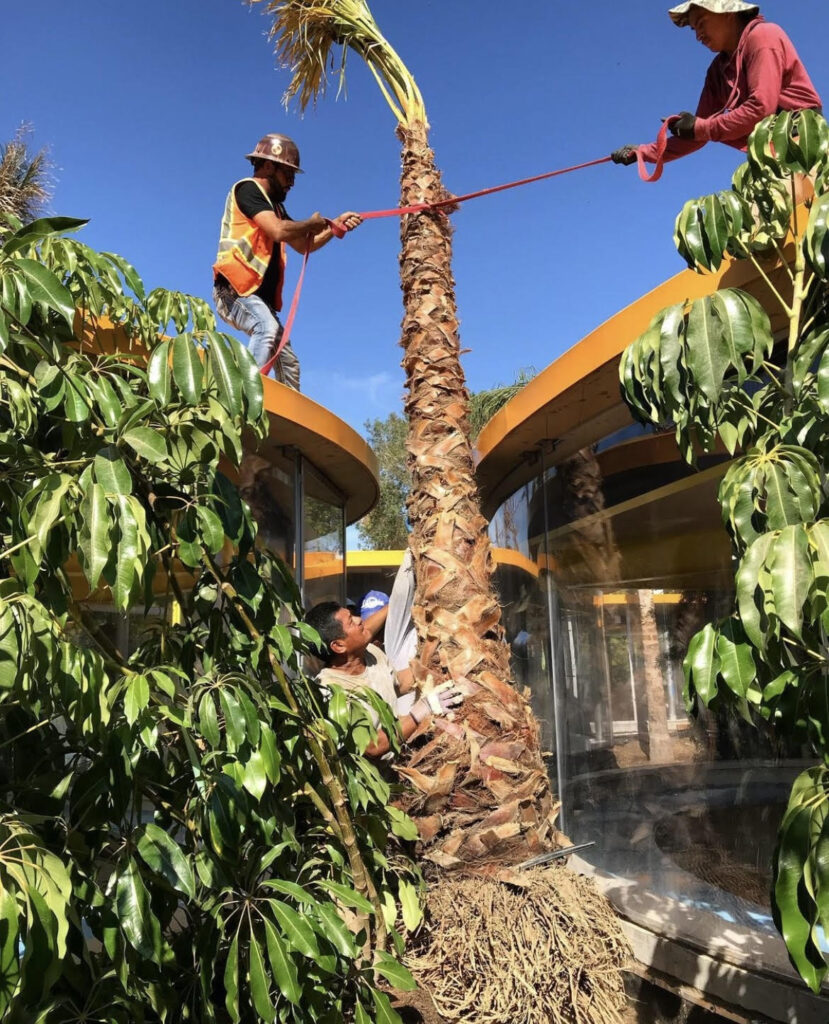
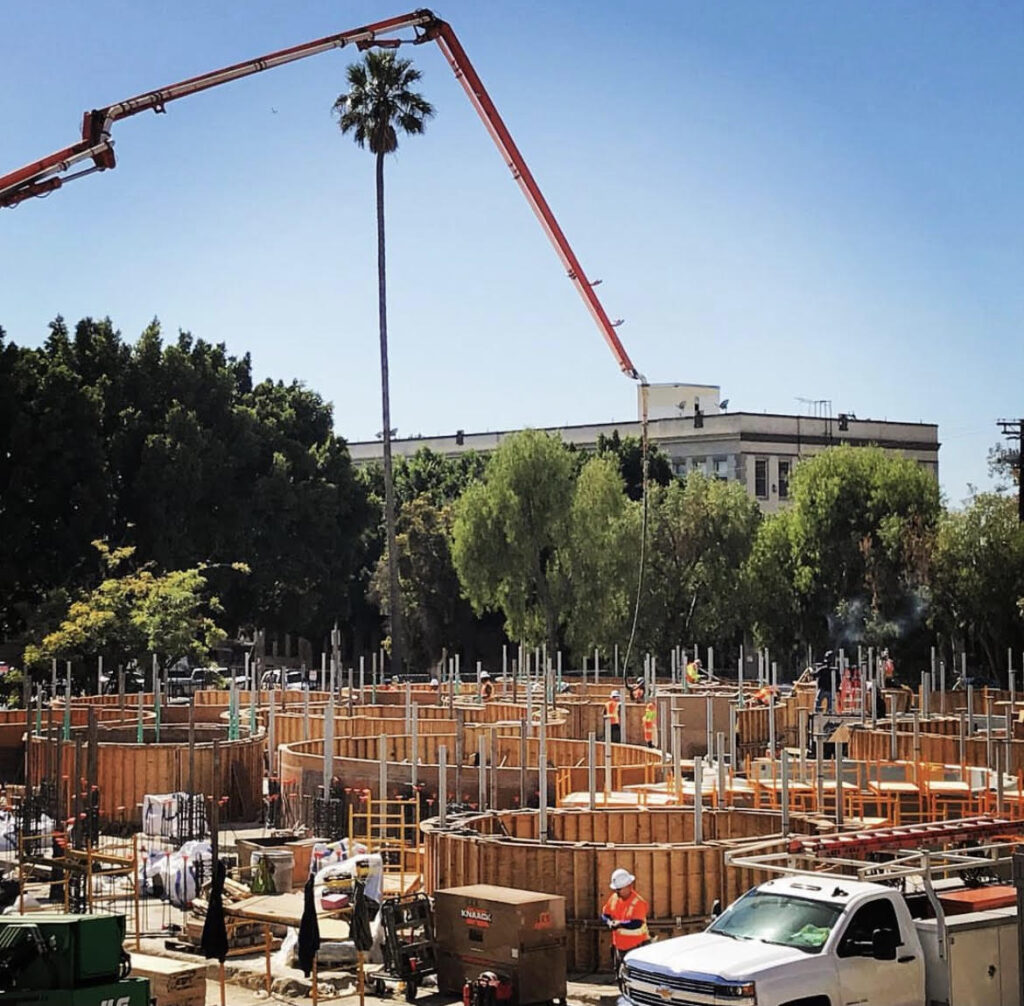
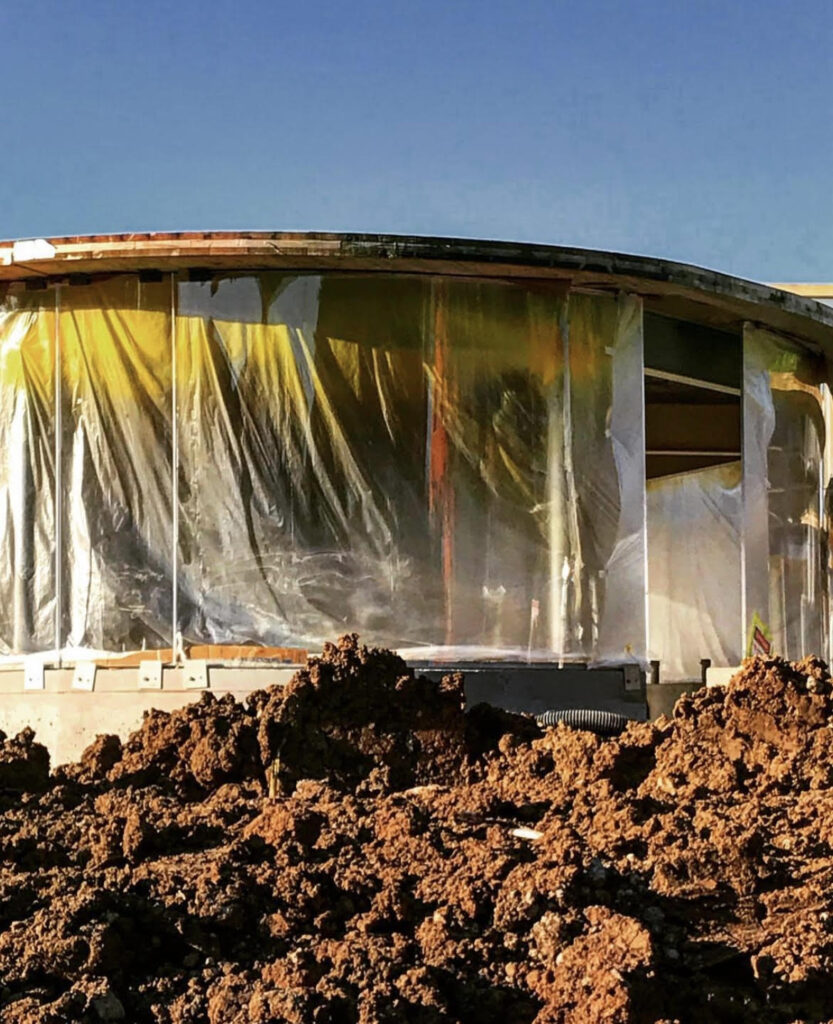
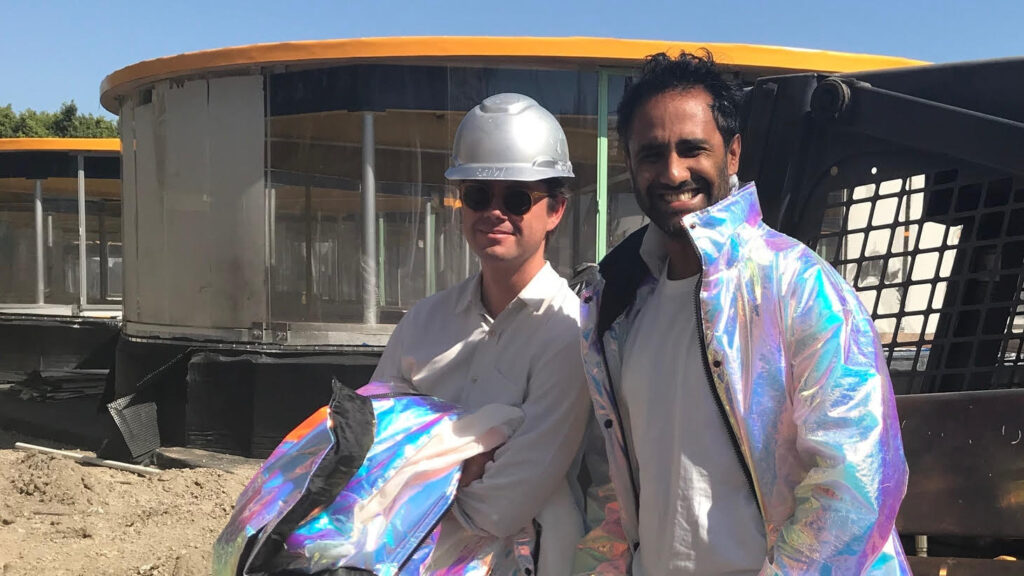
Do you have a favorite plant?
Yes, I like the Pittosporum — It smells really good. I also love the umbrella tree, which I think is originally from Australia. There are a lot in LA. I also like palm trees.
You come from a family of architects. Did you always know that you wanted to do this?
I admired my grandfather a lot. When I was little, I would go to his studio and watch him sketch. He even drew the flowers that were going to grow in the building and the gardens, all by hand with his pencil. I saw how much he enjoyed that and I wanted to be just like him. It’s fun, architecture is a lot of fun.
What is the meaning of architecture to you?
Architecture is a service to humanity — to make cities and the lives of people more beautiful.
Los Angeles
You’ve been to a lot of cities around the world, but you love LA. Why?
(Laughs) It’s a garden city. It’s a huge city with everything. It is incredibly racially diverse and there’s a lot of open space. It has good weather and has flowers all year round, you can always smell a flower wherever you go. You can smell Pittosporum or Don Diego de noche, which I also like a lot. It’s a city that blooms all year round, culturally and nature-wise.
LA is often compared to European cities by first-time visitors. Many people think LA is ugly, flat and void of architectural history but that’s not true. You have Spanish revival style, there’s the Stahl House, Art Deco style… Do you have a favorite building?
I love all of John Lautner’s projects, the Silvertop residence in Silver Lake is really interesting, but I love all of them.
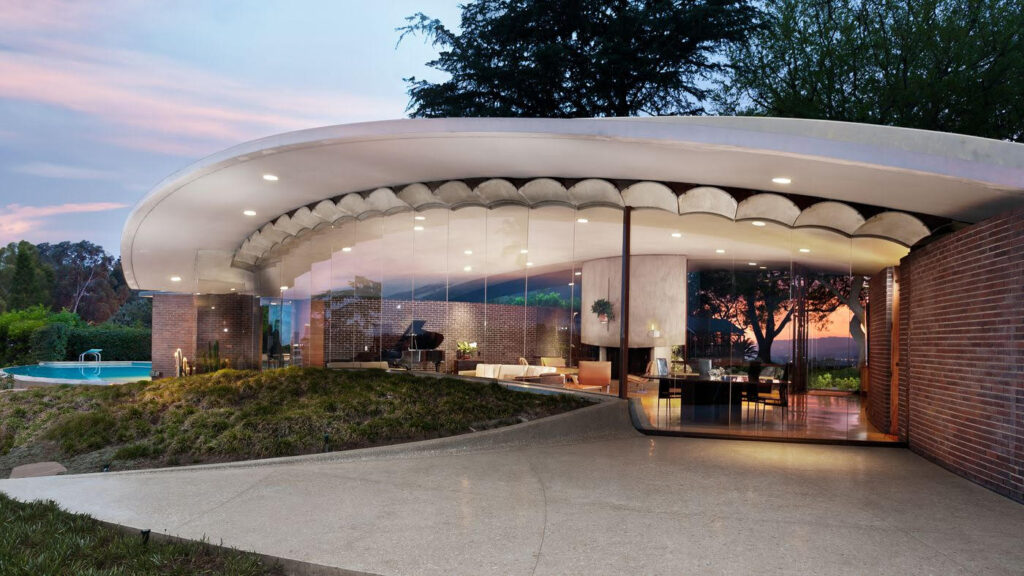

The photo of the Stahl house by Shulman made a huge impact on me. I remember seeing the photo for the first time on a book cover. The house is floating above the city and you can see the contrast between both worlds. You’re enjoying your home and at the same time you’re watching millions and millions of people go about their days. That combination is magical, especially at night. Any quintessential beautiful house in the hills is.
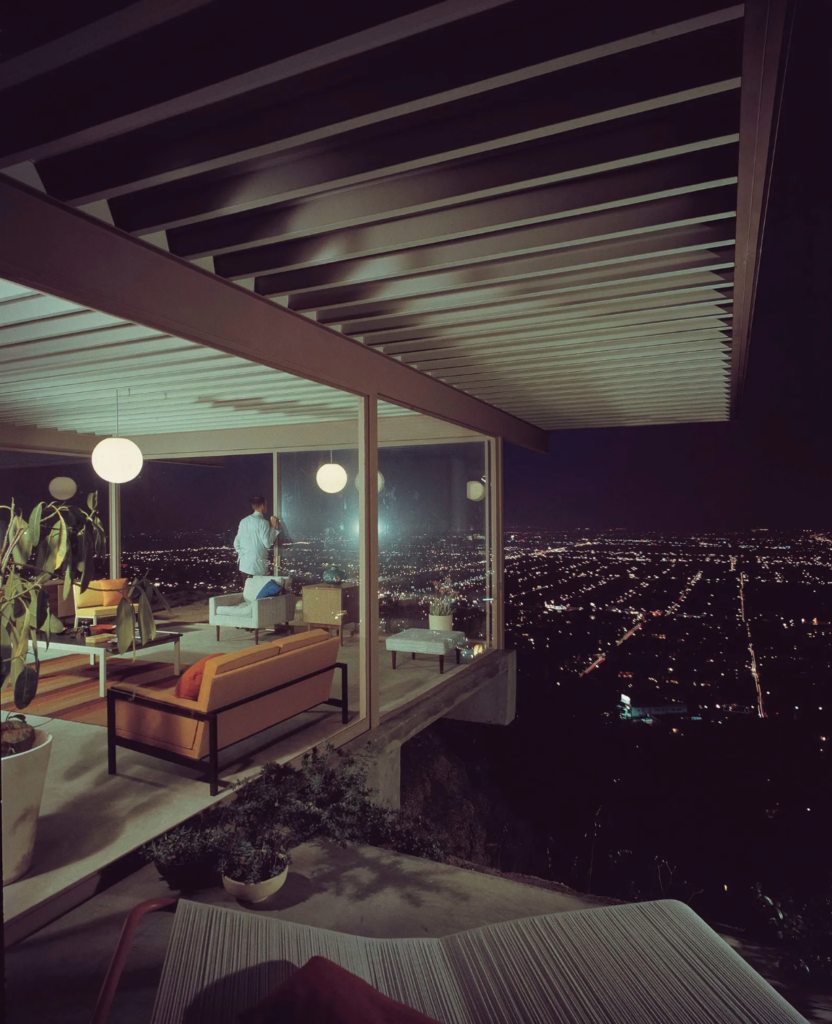
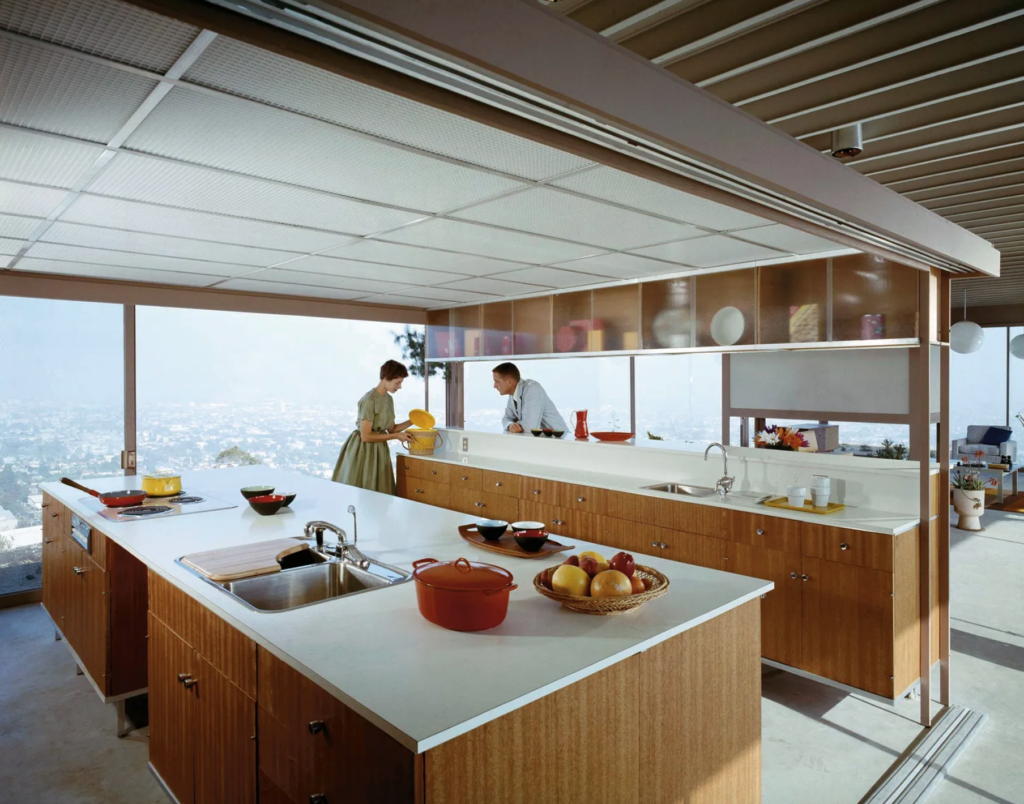

LA is a lifestyle. I understand that tourists may not like it because it is a city to live in, not to visit. There’s not an Eiffel Tower to take pictures of, there’s not a Big Ben. LA doesn’t need all those things because it’s a city made for living. Angelenos know that, understand that, and love it. It doesn’t need tourism to make it a good city, whereas Paris relies more on that flattery from tourists, “Oh, look! Paris is so beautiful”, LA doesn’t need that, it’s a lifestyle.
Do you have a favorite architectural style?
Googie style architecture — I like all the vintage retro signs and buildings.
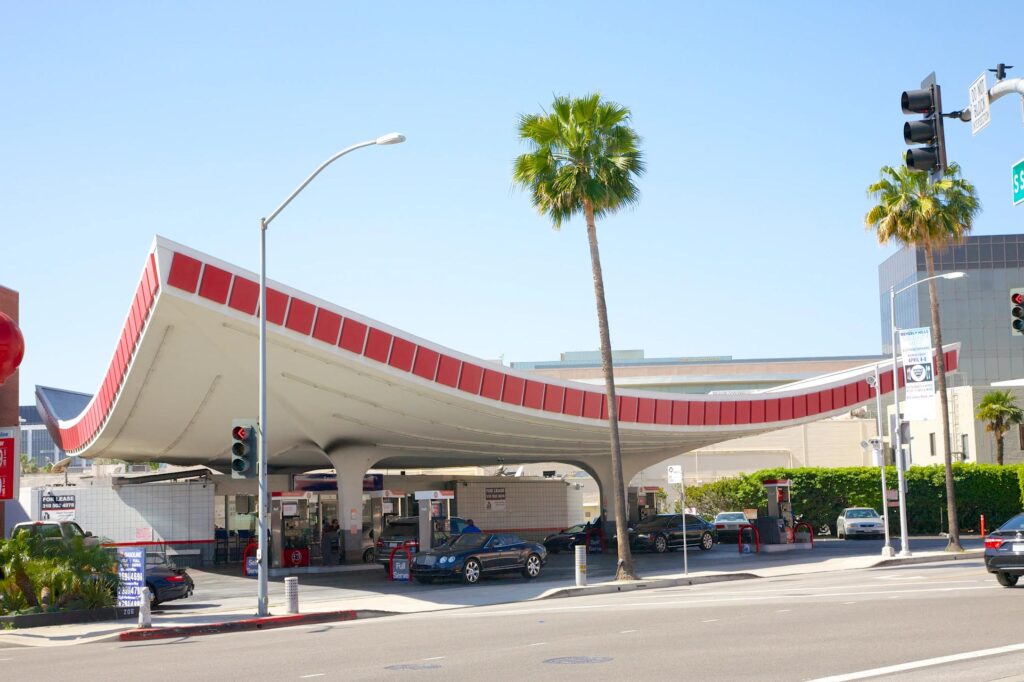
Union 76 gas station in Beverly Hills
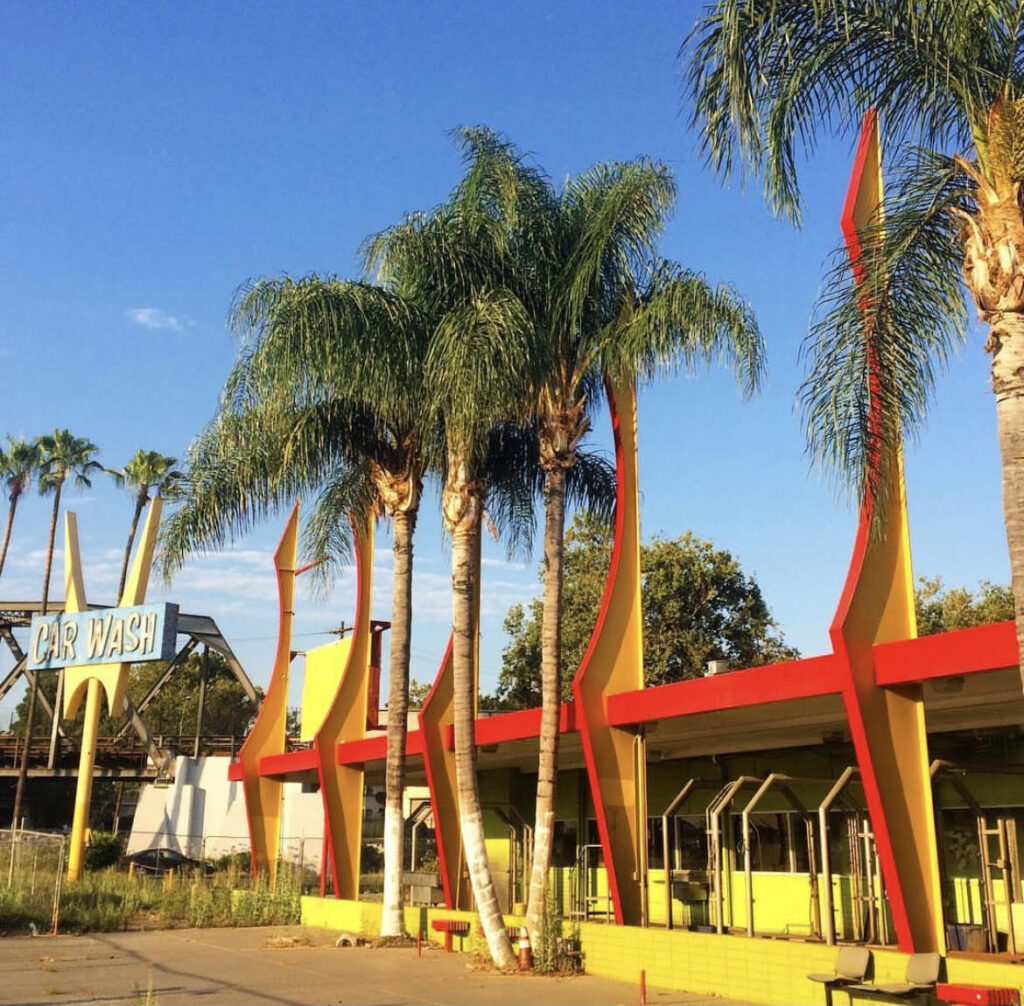
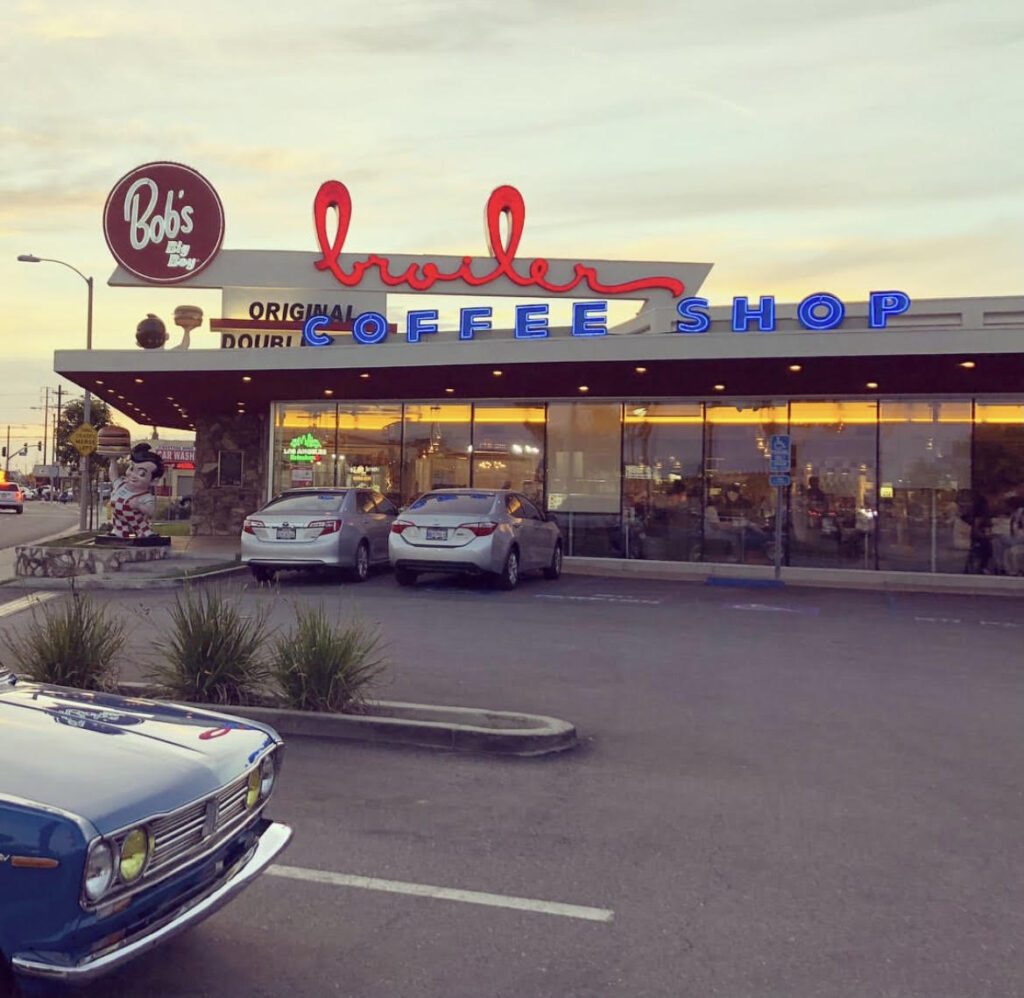
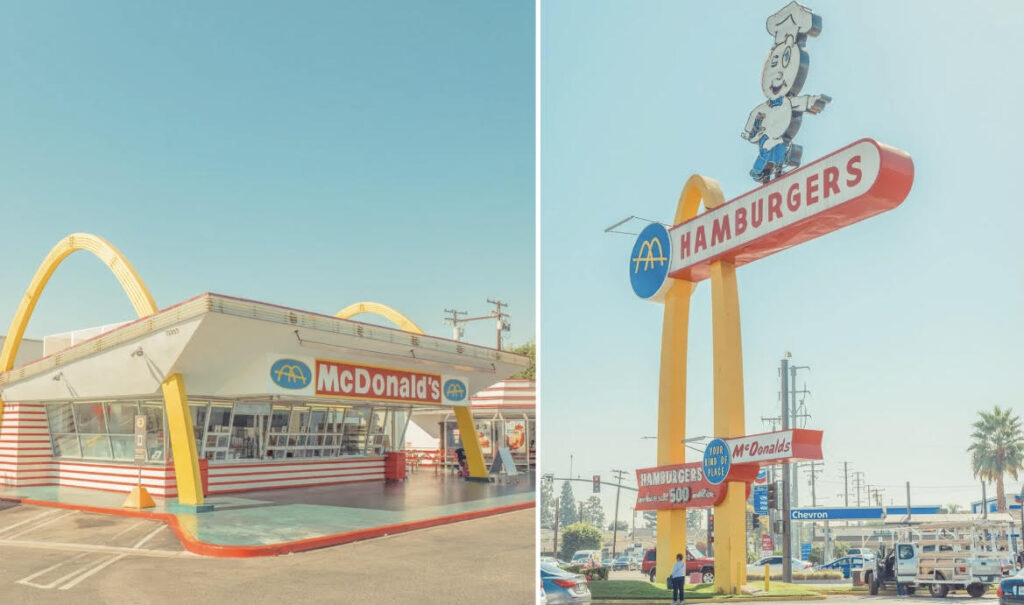
Photos by Franck Bohbot
Also, the Streamline Moderne style, where the shape of the buildings resemble a boat. There’s not that many, but there’s still quite a few in LA.
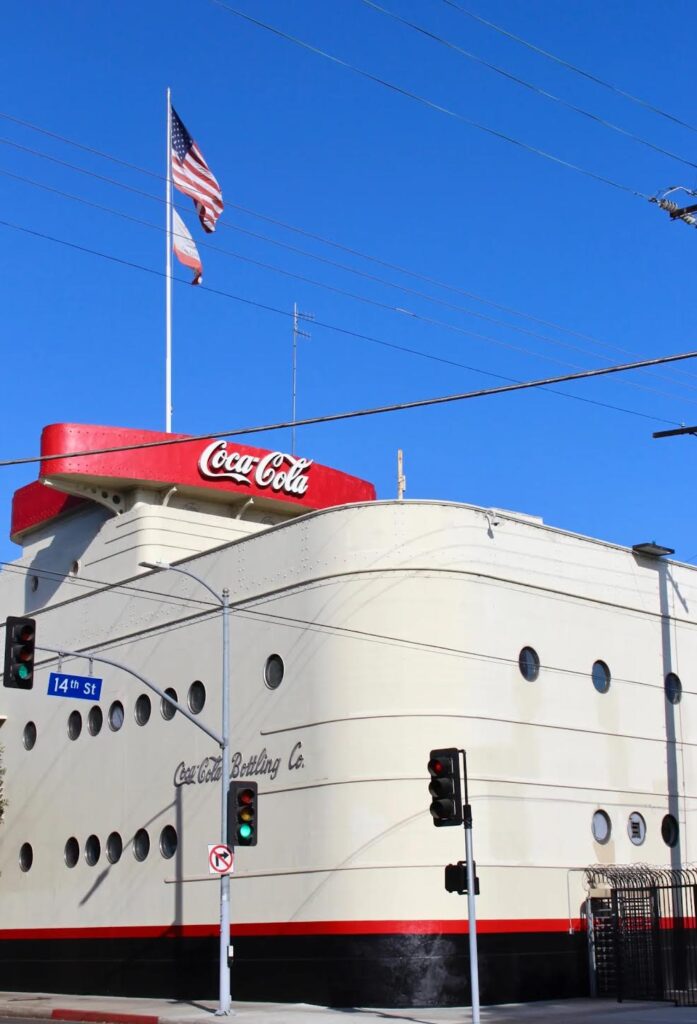
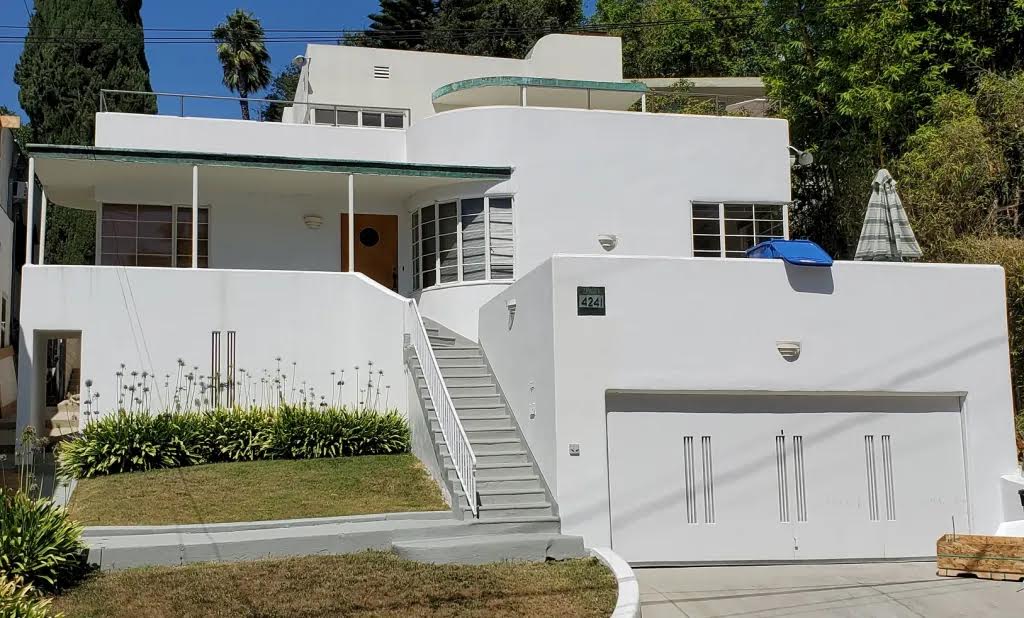
I like all styles. I like the Victorian style and I enjoy going to the Heritage Square Museum in Arroyo Seco.
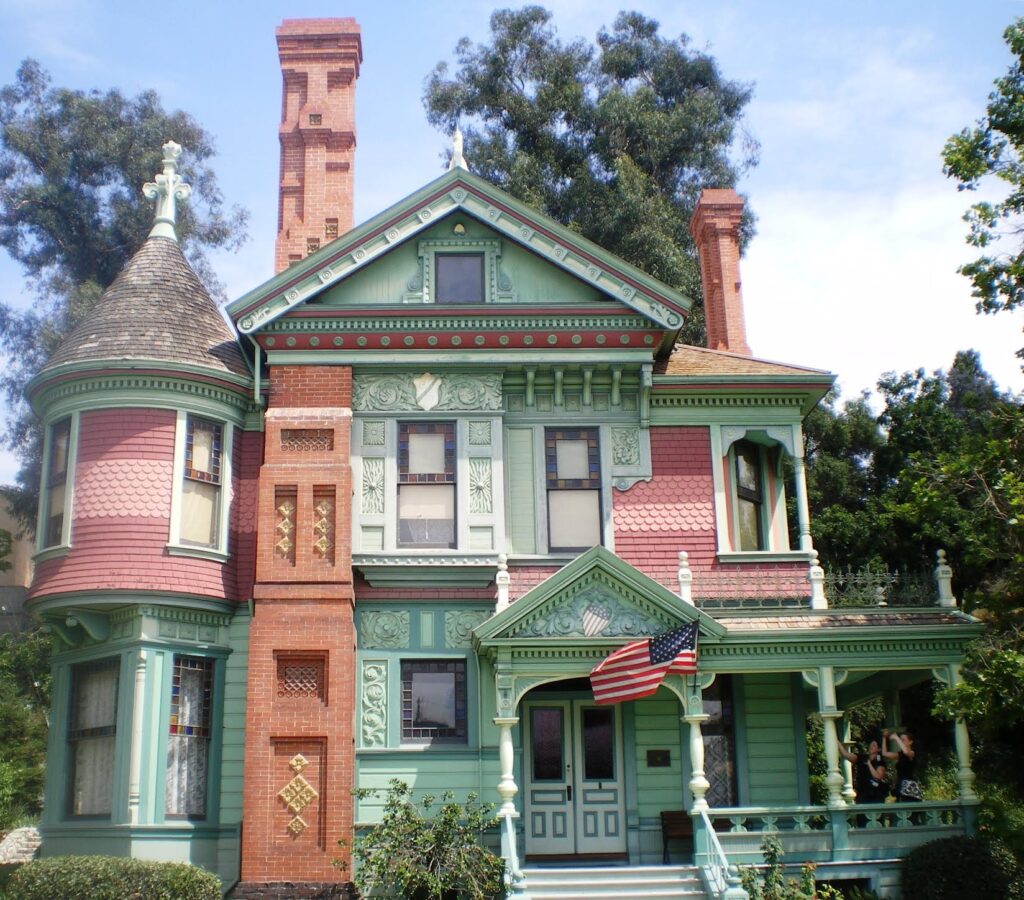
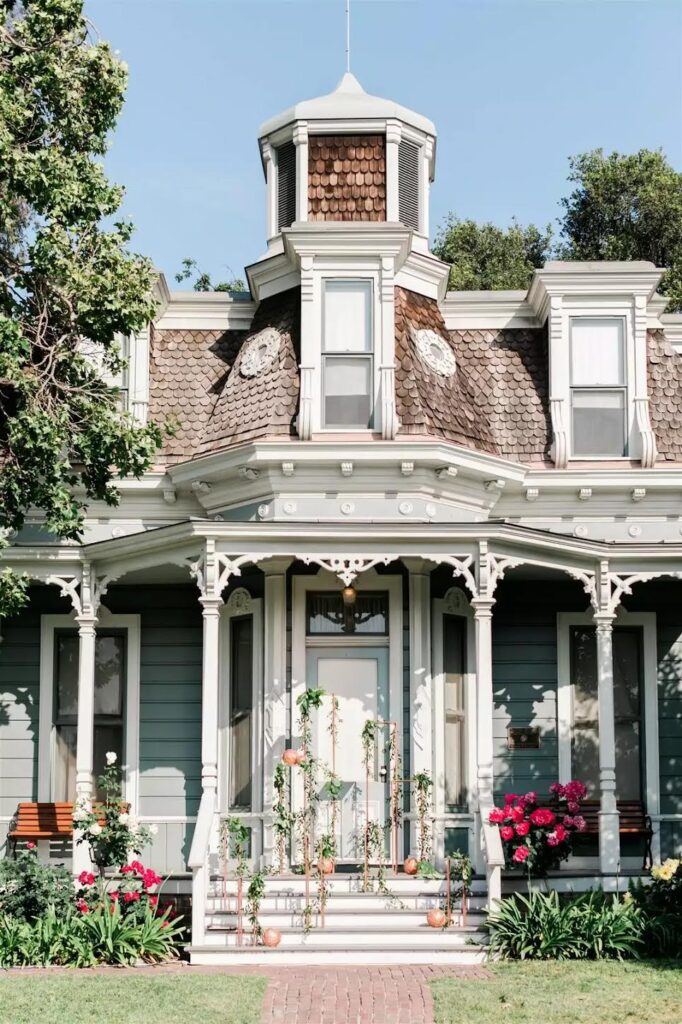
In my opinion, LA is a pioneer when it comes to 20th century architectural style, even more so than NY. Yes, you have Manhattan and all cities want to be like Manhattan. But I think the lifestyle in LA is a lot, a lot better than NY. So, is architecture about building the tallest skyscraper or is it about making a city to be the best to live in? Undoubtedly, I choose the second option, I choose LA (laughs).
What are your favorite restaurants in LA?
Any restaurant with a garden. I haven’t been there in a while — I went back to Madrid in 2020 for a week and I’m still here — so, I don’t know if they’re still open, but I really like Cliff’s Edge in Silver Lake on Sunset Blvd. It’s a garden that has a Ficus that must be around 100 years old; the restaurant is centered around the Ficus. Then, of course, Resident in the Arts District — It’s the best bar in the world!
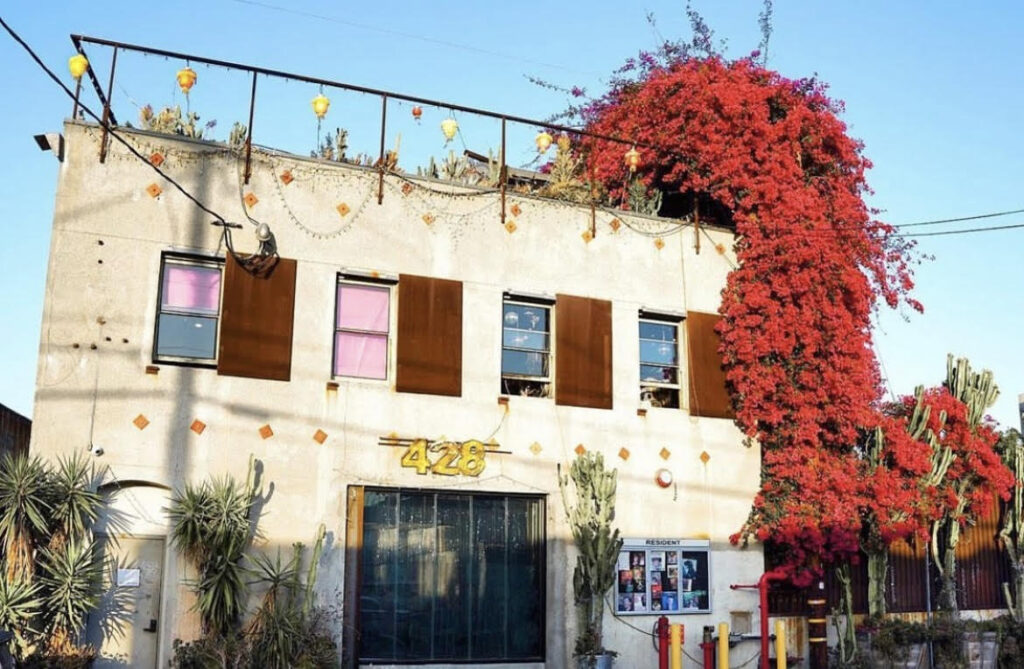
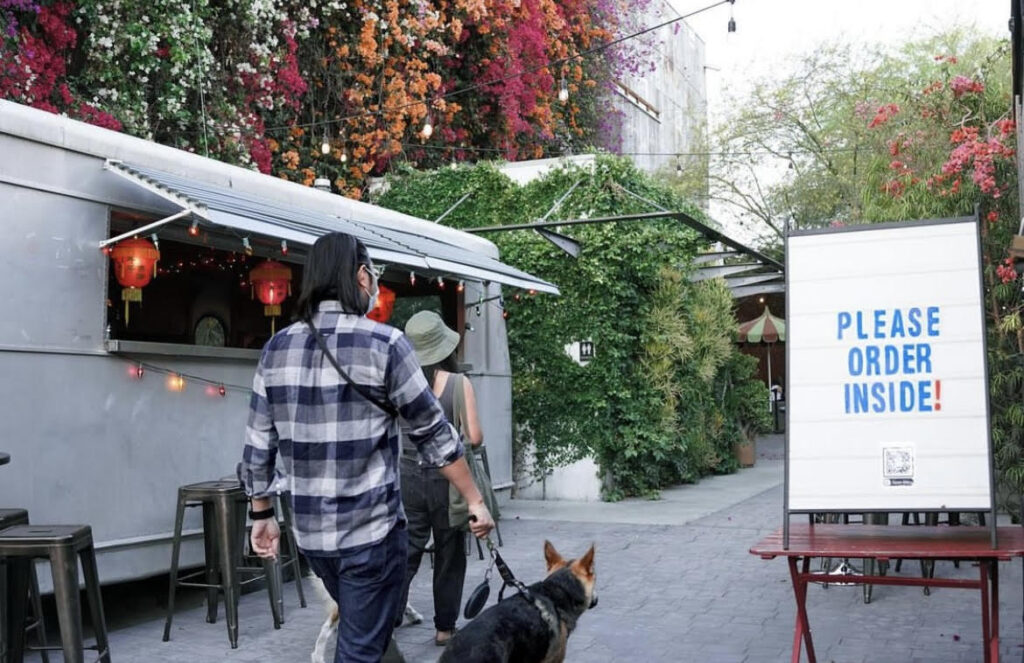
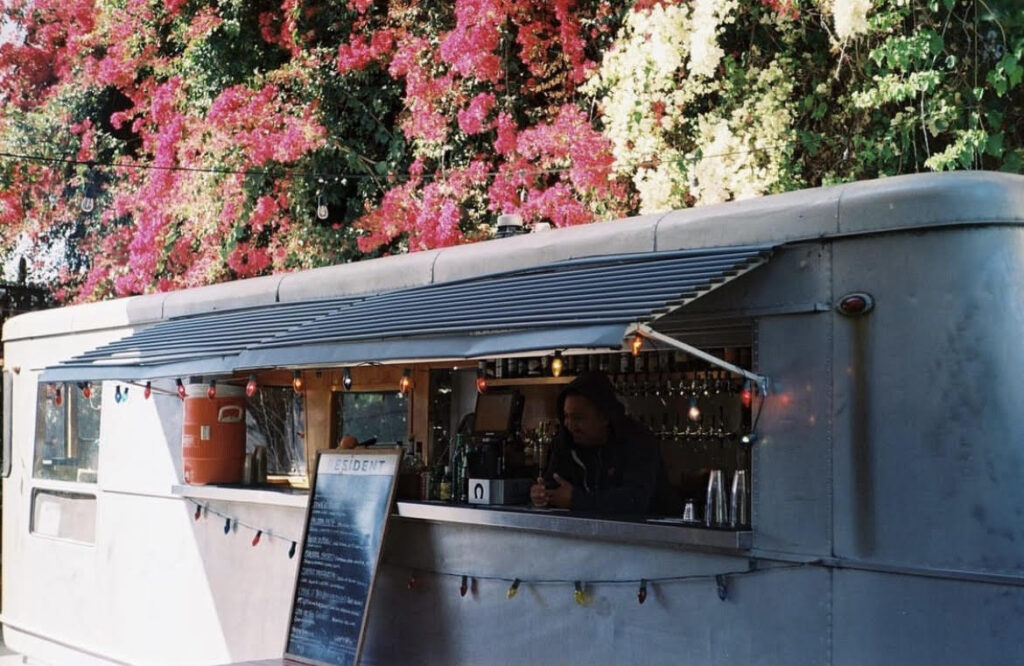
You can also eat and everything is centered around the garden. There’s an indoor area as well, but every time I go, I’m always in the outdoor area. Many times when I go, there’s no one inside except when there’s a live concert. Have you been?
I haven’t been!
You have to go. It’s a very fun place.
Note: Cliff’s Edge is now Bacari Silverlake, which opened in June 2021. But don’t worry! They kept the outdoor garden intact. I did some research and this space has been considered one of LA’s top outdoor dining patios for many years, so no one would think of demolishing the garden. Bacari has also opened two more locations: 3rd Street and West Adams — but in my opinion, the Silver Lake location is the most beautiful one. You have to make reservations at least a week in advance. Below are a few pictures.
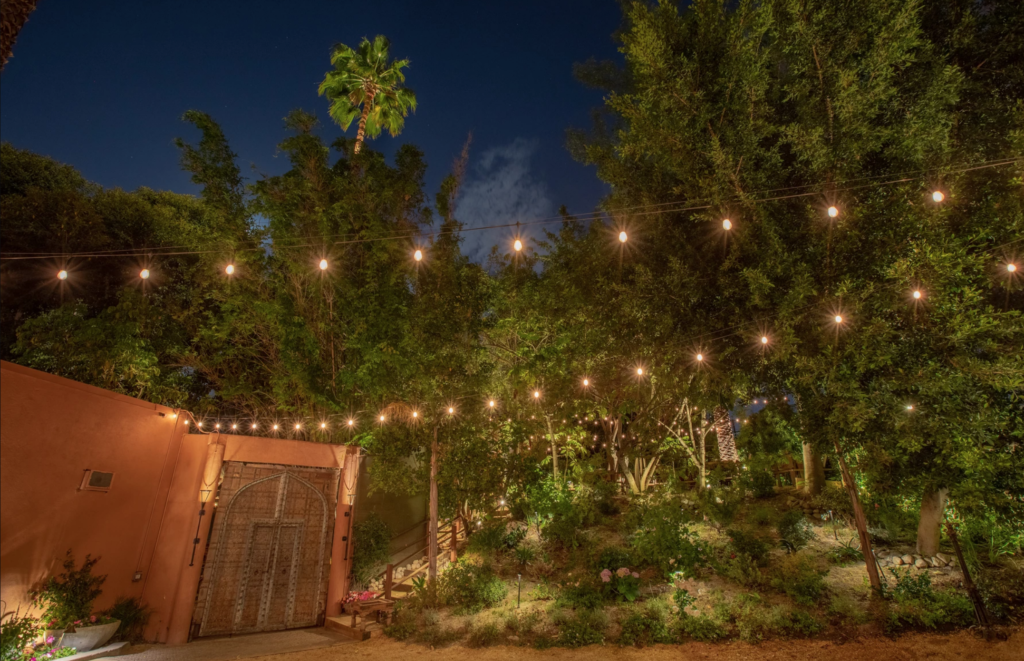
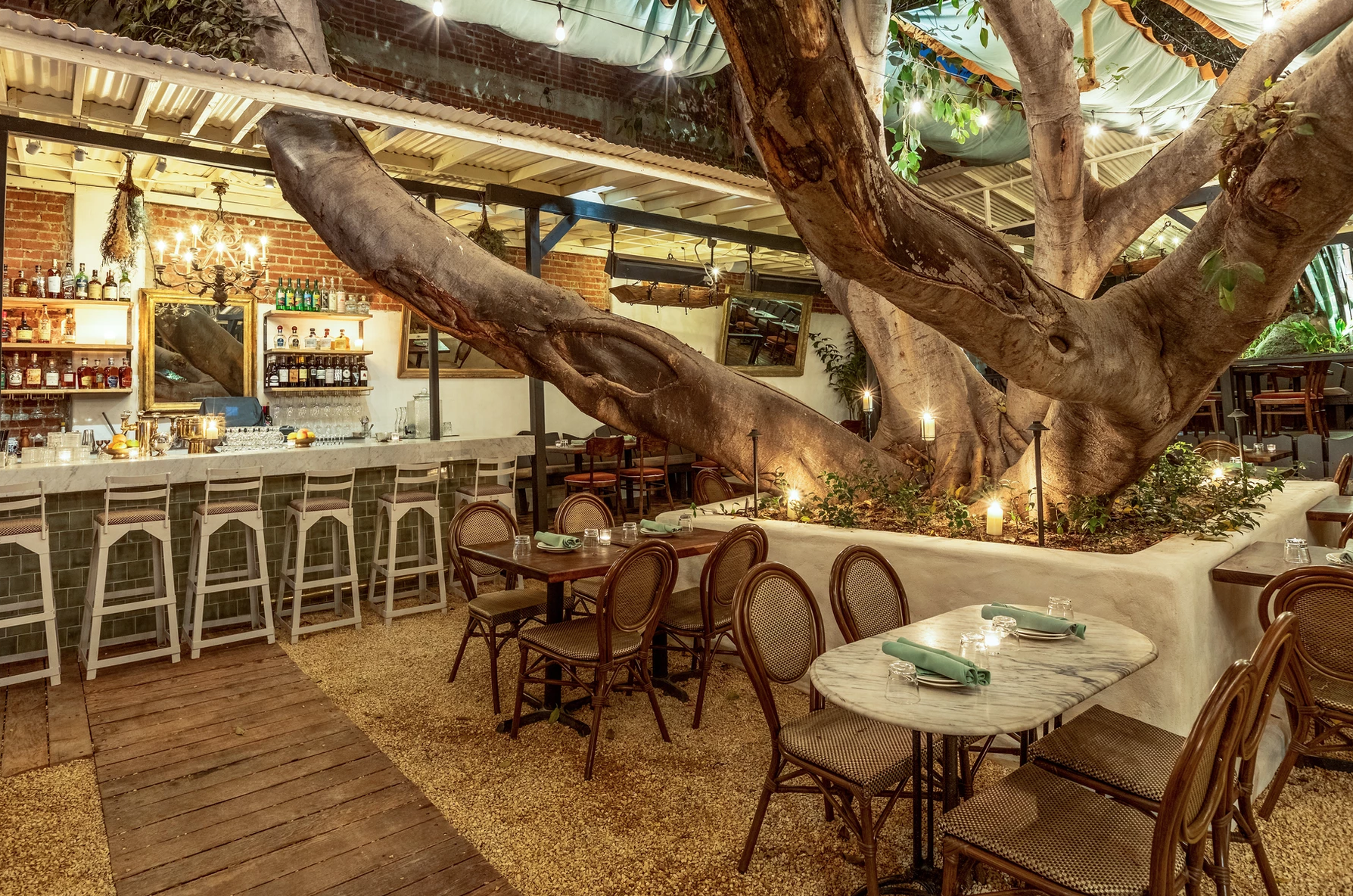

What do you like to do?
I like going to the beach, I like going to the mountains and I like driving, especially at night. I love, love driving at night and discovering new places. I’m a huge fan of dive bars, those that have a very nondescript facade where it’s just a door with a whole world behind it. For beaches, I change a lot, but the most convenient and easily accessible is Will Rogers State Beach in Santa Monica.
Madrid
What are your favorite neighborhoods and places in Madrid?
Yesterday I was in Delicias at the Railway Museum (Museo del Ferrocarril). It’s a beautiful building. Right next to it, there’s an old brewery that has been turned into a museum. It’s called El Aguila and the style is Neo-Mudejar, which is Moorish revival architecture that was adopted in Spain 1,000 years ago. The facades have a lot of texture and they use bricks in a very creative way. The best known is the Plaza de Toros de Las Ventas, but that’s not the most beautiful building. Any building you come across in that area with that same architectural style is beautiful. The neighborhood I like the most is Madrid Centro: From Chueca to Lavapies.
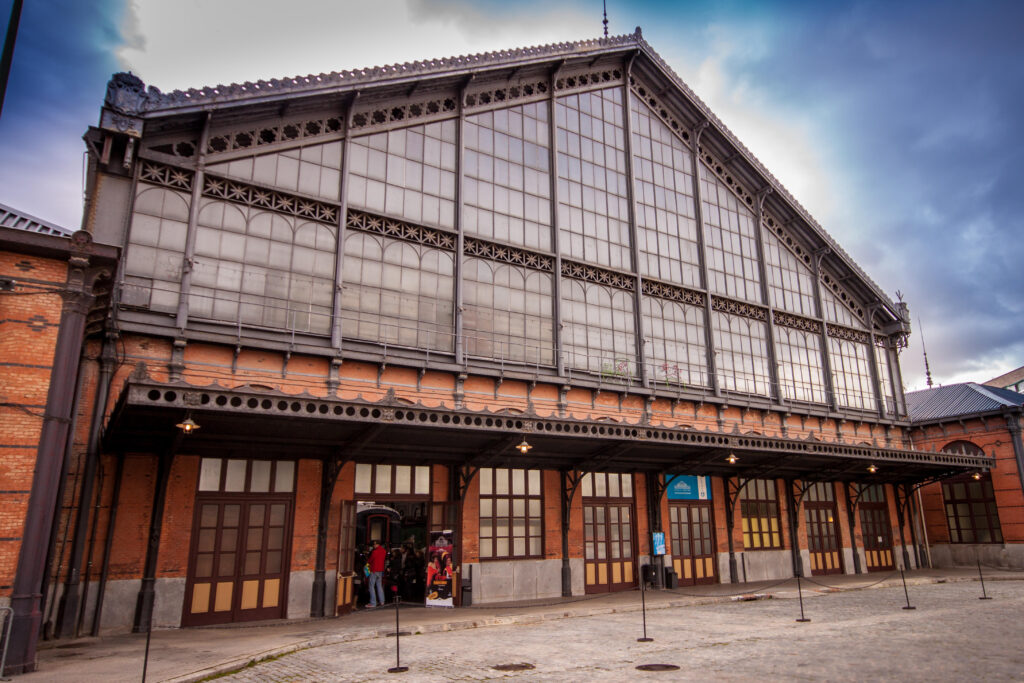
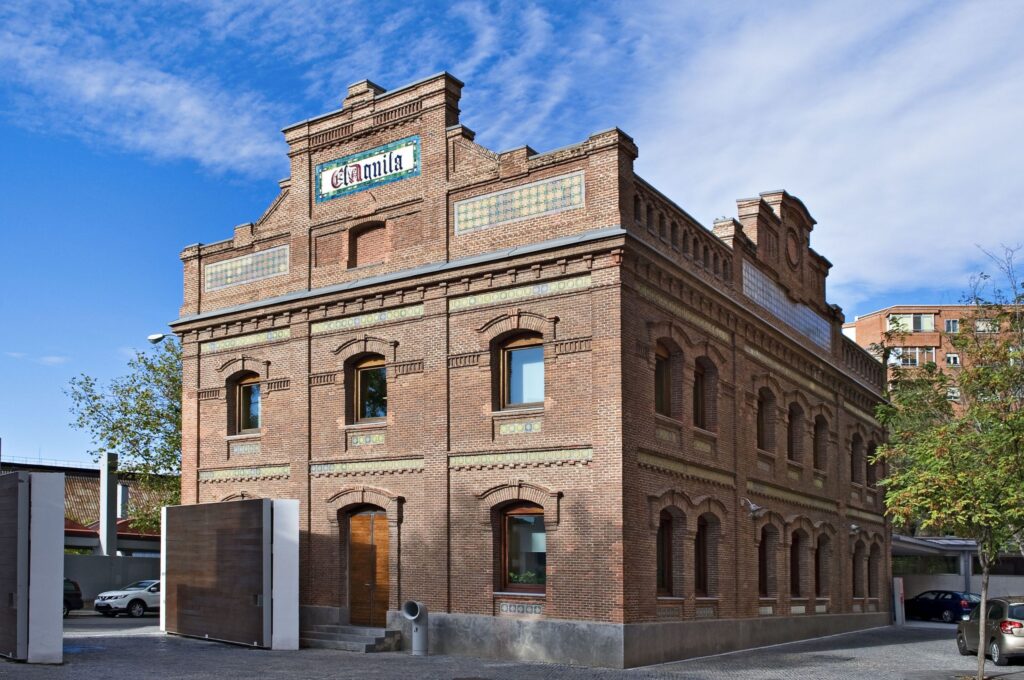

Do you have a favorite restaurant in Madrid?
I like Tasca places and Casa Varona is really good: great price and amazing quality.
What projects are you currently working on?
I just finished a storefront in Venice for Fat Sals. I’m doing another one for them in Culver City. I’m also working on a pre-existing building in Madrid, where we want to build a patio with an indoor garden. I’m also finishing two houses in Mount Washington (LA neighborhood). The project has been paused since 2020, but we’re going to wrap up all the carpentry here in Madrid and go there next month. They’re going to be very beautiful.
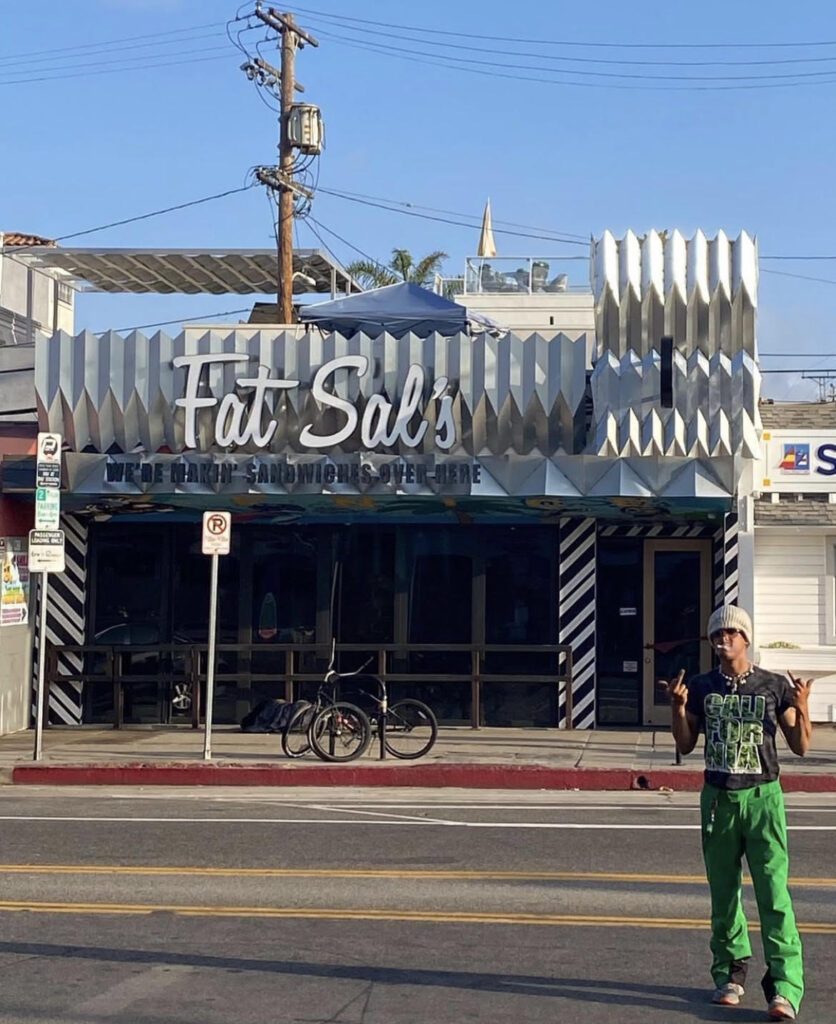

Follow Diego’s IG @DiegoCanoLasso



